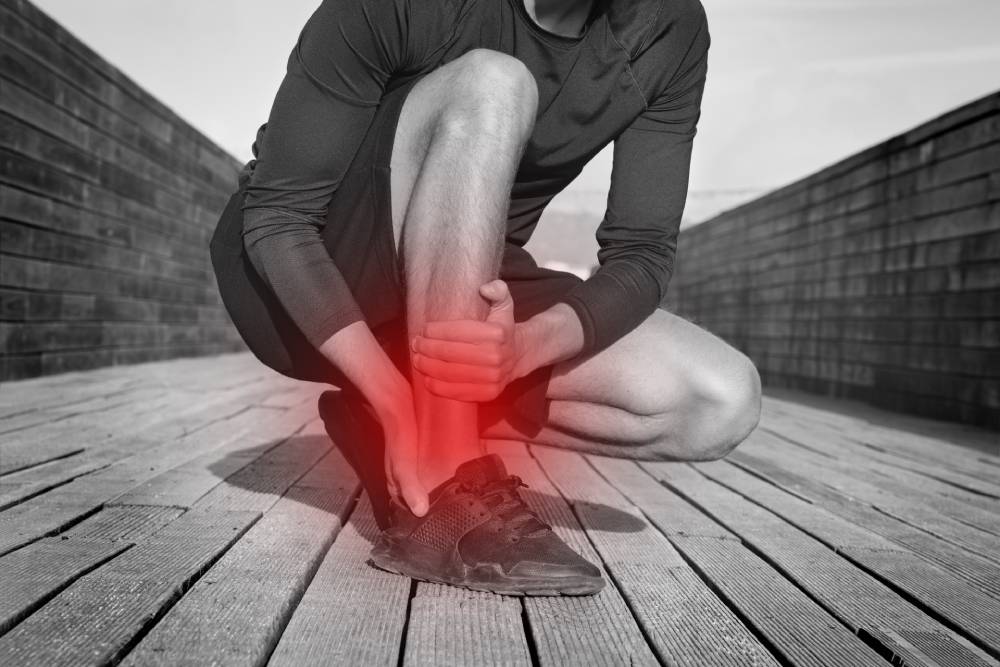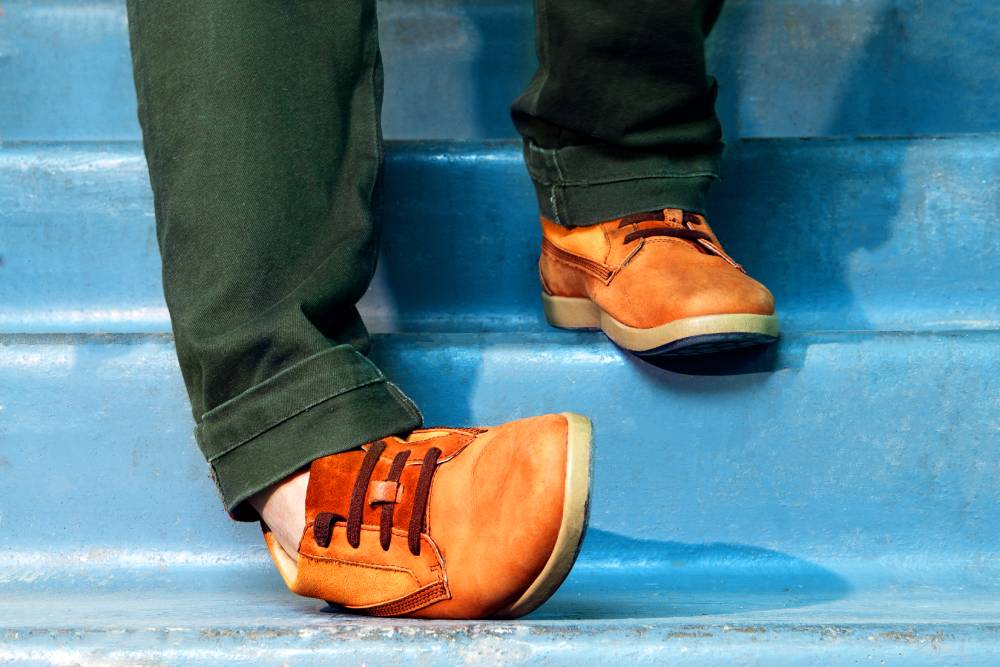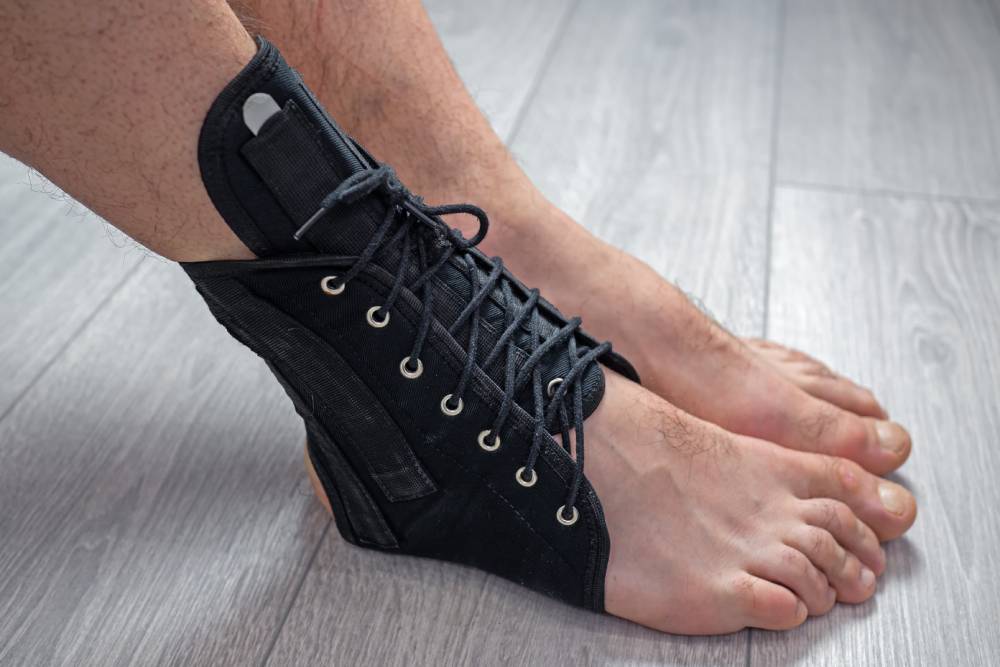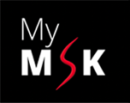
This joint is further reinforced and strengthened by bands of fibrous tissue, called ligaments. These ligaments assist the ankle joint in its up and down movement (dorsiflexion and plantar flexion) as well as a limited range of inversion, eversion, and rotation movements.
Ligaments of the Ankle Joint
The main ligaments of the ankle joint are:
- Medial Ligament – also known as the Deltoid ligament, consists of four bands of fibrous tissue, the medial collateral ligaments. Triangular and having two layers, superficial and deep, their main function is to prevent the ankle from over-eversion or over pronating.
- Lateral Ligament – present on the lateral side (outer aspect) of the ankle), this ligament is comprised of three separate bands, namely, the anterior (front) and posterior (back) talofibular, and calcaneofibular (middle). It works to stop over-supination of the foot or ‘rolling the ankle’
- Syndesmotic Ligaments – these are ligaments that bind the distal tibia and fibula at the Distal tibiofibular syndesmosis. Injury of these is what we refer to as a ‘high’ ankle sprain. The ligaments most likely to get injured here are the anterior inferior tibiofibular ligament, posterior inferior tibiofibular ligament, and the interosseous ligament.
The primary functions of the ankle ligaments are to add reinforcement and stability to the ankle joint and prevent excessive movement.
How is the ankle injured?

The ankle joint supports the weight of the whole body, and plays a part in preventing the arches of the foot from collapsing during walking, running, etc.
Ankle ligament injuries occur when the foot is turned, putting a large downward and rotational force through the bones and ligaments. This may cause the ligaments to get stretched or torn.
This can happen during sports which involved frequent changes of direction such as like football, basketball, and tennis.
Ankle ligaments can also get injured while running or walking on an uneven surface such as trail running or hiking.
Ankle injuries can also become complicated if accompanied by a fracture or tendon injury. The personal tendons frequently get injured during lateral ankle ligament injuries
Types of Ankle Ligament Injury
There are three main types, which include:
- Inversion ankle sprain– the anterior talofibular ligament (ATFL) is present within the joint capsule, and has a high incidence of injury. Most ankle ligament sprains are of ATFL alone. It is sometimes accompanied by calcaneofibular ligament (CFL) injury. Sometimes, a piece of bone might come off the distal fibula along with the ligament (avulsion injury). This is found on imaging.
- High ankle sprain – injury to the syndesmotic ligaments between the tibia and fibula is usually the result of rotational forces and is called a ‘high ankle sprain’
The incidence of these tends to be quite lower, being around 20% of the total cases. However, they can be more serious and take a long time to heal.
They occur when the foot is firmly planted on a flat surface, and the lower leg or foot twists, causing the two leg bones to separate.
- Eversion ankle sprain – having two layers, the deltoid ligament is stronger than the lateral, and is therefore not commonly injured. It is usually damaged in relation to a serious injury to the ankle such as that in high impact trauma.
What are the grades of ankle ligament injury?
Physicians classify this injury into three grades:
- Grade 1 – a mild tear or just over-stretching of the ligament, causing minimal pain and swelling. The range of motion is usually not affected, and the ankle is able to support your body weight.
- Grade 2 – a moderate and painful injury, causing partial tearing, and swelling. There will be difficulty in weightbearing, and mobility will be affected to a certain degree.
- Grade 3 – A significant injury involving complete rupture of the ligaments. There will be significant amount of pain, bruising, and swelling, and movement is painful in most directions
Diagnosis
An ankle ligament injury is diagnosed after a careful history and examination. The doctor will check the range of motion at the joint, and assess the degree of pain and swelling. In cases of moderate to severe injury, imaging is also performed.
The following imaging studies may be performed:
- X-rays – for ruling out associated fractures of the ankle bones
- Ultrasound – used to determine the if there is a rupture of the ankle ligament.
- Magnetic Resonance Imaging (MRI) – used in diagnostic uncertainty if Xray or Ultrasound are unable to determine the full extent of the injury. MRI is often performed where a complete ligament tear needs to be ruled out
How is an ankle ligament injury treated?
Grade 1
Ankle ligament injuries are treated according to their degree. Grade 1 injuries are usually managed conservatively, by resting the limb, icing the affected area, ankle compression for swelling, and elevating the leg (RICE principle)
Often patients also choose to have Prolotherapy or PRP to help repair the injured region

Grade 2
Over-the-counter painkillers like ibuprofen or naproxen may be prescribed in Grade 2 injury.
Along with an ankle immobilizing brace, a pain killing injection followed by Prolotherapy injections to strengthen the partially torn ligaments. Prolotherapy injections are performed into the ligaments over 3 sessions.
Platelet Rich Plasma (PRP) injections can also be performed around injure ligaments to help strengthen the region and help prevent further strains or injury. This works well in conjunction with rehabilitation exercises.
Prolotherapy for managing chronic ankle ligament injury
Mofrad et al (2022) treated 25 patients with chronic ankle ligament injury with prolotherapy over a 6-month period. They found Prolotherapy to decrease pain and functional instability throughout this period.
Grade 3
This is often injury is the most severe, and usually requires surgery.
Resistance band exercises are done to strengthen the muscles around the ankle. This decreases the recurrence rate of future sprains or ankle injury.
Balance and proprioception – after an ankle injury, it is necessary to restabilize the joint for balance. Proprioception is the ability of the body to sense how it is positioned and is affected after any ankle injury.
Possible Complications
If ankle ligament injuries are left untreated, or are of a complex nature, possibly involving fractures and tendon rupture, they can cause significant complications. Chronic pain may develop, hindering routine activities. Arthritic changes can develop, as the injury can cause degeneration of the joint including the capsule.
Conclusion
Ligament injuries of the ankle can cause significant distress, and are prone to developing into long-term issues. But, with proper diagnosis and treatment, most of the patients can get back to high level Sport quickly.
Mofrad , M, Rezasoltabi Z, Dadarkhah, A, Panah, S, Tabatabaee S and Azarakhsh, A (2022) Neurofascial Dextrose Prolotherapy for Managing Chronic Ankle Ligament Injury. Anesth Pain Med (2022 Feb) 12 (1)




